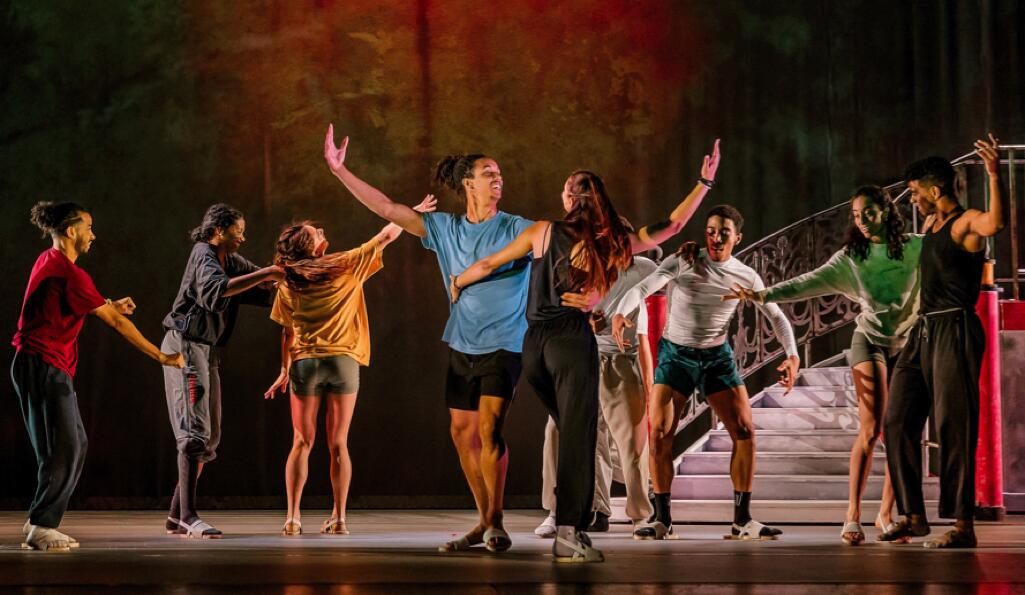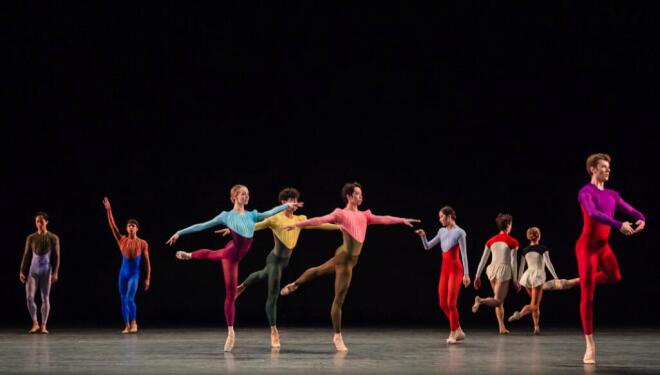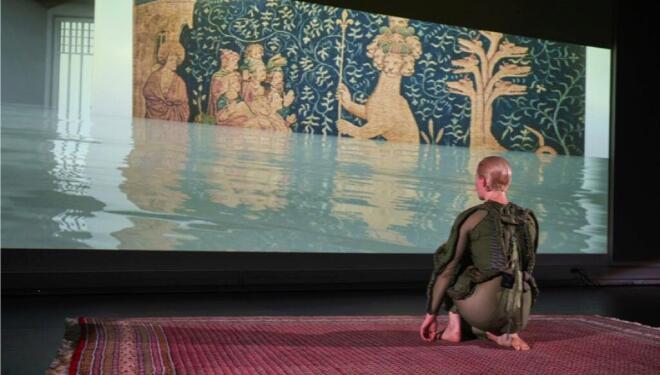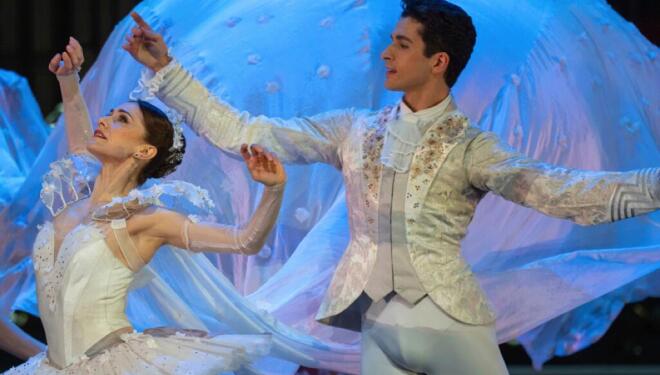Carlos Acosta's Nutcracker in Havana
Carlos Acosta talks to Culture Whisper about his decision to transport the Christmas ballet to his native Cuba and turn it into Nutcracker in Havana

Carlos Acosta came late to Christmas.The Cuba where the boy who was to become an international ballet superstar grew up in the 1970s and 80s was officially an atheistic state, where the ruling Communist Party had abolished Christmas.
‘The 24th December we call ‘noche buena’. Normally you’d have a meal, in Cuba you roast a pig and that’s the meal. New Year’s Eve was the main event.’
Acosta’s first contact with Christmas and its extravagant celebrations came when he joined Houston Ballet aged 20; and the wonder of that discovery still transpires in his voice after all these years;
‘I was living in [company director] Ben Stevenson’s home, because I wasn’t able to rent a place of my own yet. I arrived to the company in October, and Christmas was only two months later, and then I found this huge pine tree in the middle of the living room…’
Spool forward 30 years and Carlos Acosta, now director of Birmingham Royal Ballet as well as of the Havana-based Acosta Danza and its recently formed junior company, is putting the finishing touches to his foray into the ballet world’s Christmas tradition - he is creating his own Nutcracker.
He is aware, of course, that every major company in the USA, Europe and beyond has a Nutcracker – he has, after all, danced in many of them. His Birmingham Royal Ballet has Peter Wright’s tailor-made production, which Acosta describes as ‘one of the greatest Nutcrackers ever created.’

BRB The Nutcracker, Karla Doorbar as Clara, Angela Paul as Clara's Mother and Rory Mackay as Drosselmeyer. Photo Andrew Ross
However,
‘The Nutcracker is pretty much European-centric – the house, the costumes – it could be Victorian or it could be Germanic; but we haven’t had one from Cuba.’
So, he set about devising and choreographing Nutcracker in Havana for his two Cuba-based contemporary dance companies.

Carlos Acosta with artists of Acosta Danza and Acosta Danza Yunior. Photo: Tatum Reid
The barebones of the traditional story remain: at a Christmas Eve party in a well-to-do family home, young Clara is given a nutcracker doll by the mysterious Drosselmeyer; as midnight strikes, and after a fierce battle with an army of rats, the doll turns into a handsome young man and off they go on a dream journey to the Kingdom of Sweets.
Well, sort of.
‘Our house is like a shack in the countryside in the outskirts of Havana with palm leaves for a roof. The Drosselmeyer character is called Uncle Elias. He left the island and has been living in Miami for 30 years, and he comes back to look for his birthplace. The first thing you see is the uncle in a 57 Chevrolet car – obviously a classic car in Cuba – full of presents for his birthplace.
‘The nutcracker doll is a mambi, one of the soldiers who fought against Spain in Cuba’s war of independence, with his machete – it’s a very distinctive look. This doll then becomes the real dancer.’
Among the presents produced by the traditional Drosselmeyer are two commedia dell’arte figures: Harlequin and Columbine. In Nutcracker in Havana, instead,
‘Uncle Elias brings two life-size dolls: Changó [the god of thunder] and Oshun [Changó's consort], two figures from our own Afro-Cuban culture. I also have a traditional tin soldier.’
The famous Sugar Plum Fairy pas de deux remains, its choreography untouched, but the setting is something else again. At the end of a very Cuban Act II, with joyous carnival dances, the 'comparsas', and much else besides,
‘I recreated a jazz nightclub scene. All the characters are there, watching the Cavalier and the Sugar Plum Fairy, and you still have the main pas de deux. It’s like a Ronnie Scott’s moment.’

Laura Rodriguez & Alejandro Silva in rehearsal for Nutcracker in Havana. Photo: Tatum Reid
Ever the dancer, as he speaks Acosta’s arms trace some of that pas port de bras… and he becomes really animated when talking about the music for Nutcracker in Havana. Tchaikovsky’s much-loved score has been radically rearranged by the Cuban composer and regular Acosta collaborator Pepe Gavilondo. Acosta was adamant a conga had to feature prominently, so, I asked him to talk me through his conversations with the composer.
‘I said it has to be the melody, it has to be recognisable, then I gave him the freedom to have a go. In the beginning I was shocked because some of the tracks have electric guitar, saxophone… you don’t have that in traditional Tchaikovsky!
‘I’ve done The Nutcracker many times, so I know the music very well, and it took me some time to adapt, wow… that is a big shock. But once he delivered things,I said, that works, that doesn’t work, the end has to be higher, so we started to collaborate like that until we got there… and I’m still adjusting things.
‘I think at first it may be a big surprise for people because they are not expecting that.’
Nutcracker in Havana is a collaborative work, produced with Norwich Theatre Royal and Valid Productions, and assembling a creative team Acosta is proud of.
‘I’m very lucky to be working with [scenographer] Nina Dunn. The main scenography elements are projections, because from the beginning the briefing was that this was meant to be a tourable production, pitched at mid-scale theatres that normally don’t have the luxury of having a Nutcracker.
There are a couple of scenery elements: the bed for Clara, obviously, the car that moves around, the tree that grows…
‘There is also a staircase which appears when the Uncle transforms that very humble shack into a mansion of the 40s . And obviously we rely on the skill of the lighting designer – we have Andrew Exeter, who is a wonderful lighting designer.’

Artists of Acosta Danza & Acosta Danza Yunior in rehearsal for Nutcracker in Havana. Photo: Tatum Reid
As well, the production will feature guest artists, with the Cuban dancer and choreographer Alexander Varona taking on the role of Uncle Elias. Among the principal dancers guesting are Acosta’s nephew Yonah and Lauretta Summerscales from Bayerisches Staatsballett.
Following its premiere in Norwich, Nutcracker in Havana will undertake an extensive UK tour; but at the moment there are no plans to take it to Havana, a matter of deep regret for Acosta
‘I would love to take it there! The problem is, first of all at the moment you don’t have the theatres and you don’t have the technical equipment. Also, when we go to Havana everything is for free, it’s for the people, you get no income whatsoever and I just don’t have the financial means for it.’
The killer question must be, though, will Nutcracker in Havana stand its ground against all the other productions that proliferate at this time of year?
‘Being authentic, being different has huge value. No-one can compete with us Cubans doing our own culture. We know that the Cuban people are going to bring something different from all the other companies, and I know people will applaud the uniqueness of our culture.’
Nutcracker in Havana tours from 1 Nov 2024 to 28 Jan 2025. It's at London's Southbank 10 -15 Dec. All details and tickets here



